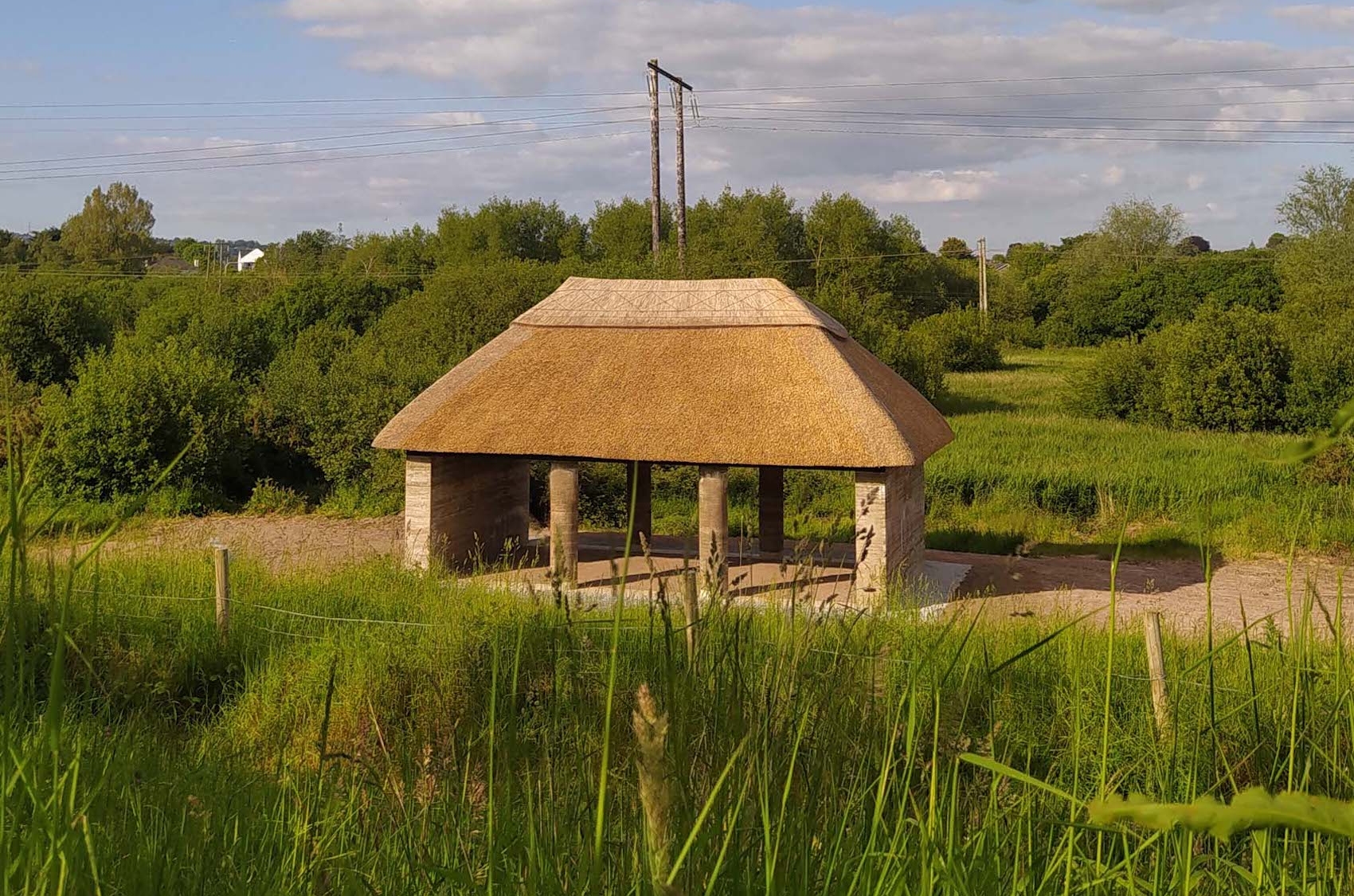Sited on the edge of a reed bog in Cork, Ireland, Fuinneamh Workshop Architects’ rammed-earth eco pavilion provides a quiet space for reflection, education, and community gatherings.
Photos
Jed Niezgoda, Seán Antóin Ó Muirí
Occupying a clearing at the threshold of Carroll’s Bog in Tramore Valley Park, central Cork, Den Talamh is a modest yet poetic intervention that connects visitors with the ecological richness of this rewilded landscape. Designed by Fuinneamh Workshop Architects and realised with the support of local volunteers, the project was built on a shoestring budget following a two-stage design competition held in 2022.
Commissioned as an open public space for talks on environmental issues and biodiversity, the structure serves as an outdoor classroom, gathering space and contemplative platform. Its form is both archetypal and site-specific: a low-slung, thatched roof supported by rammed earth walls and columns, framing an open view across the bog. The building lightly touches the land, echoing the ecological values it is designed to promote.
The plan is loosely informed by the classical typology of a miniature temple – an agora of sorts – offering a democratic space for the exchange of ideas. Its pared-back material palette and self-built ethos reflect a deep commitment to sustainability, both environmental and social.
The scheme’s rudimentary construction method reinforces its conceptual grounding. A hoggin floor provides a firm, textured base for discussion and reflection. Rammed earth end walls and four structural columns define the space, recalling the compacted ground of the former landfill on which the park is now established. Above, a timber-framed hipped roof reveals its constructional logic, capped with a reed thatch canopy that evokes vernacular Irish building traditions.
Additional Images
Credits
Architect
Fuinneamh Workshshop Architects
Engineer
Civil and Structural Engineering Advisors
Contracor
Wiseman Construction Services
Thathcher
John Barron
Client
LennonTaylor KinShip, Cork City Council & Creative Ireland
Source: Architecture Today





